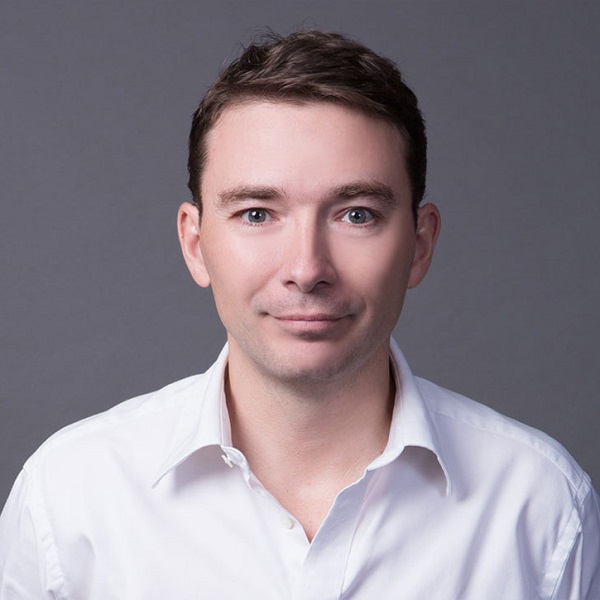
Join gaming leaders online at GamesBeat Summit Next this upcoming November 9-10. Learn more about what comes next.
Richard Rouse III had the creative vision for indie games like The Church in the Darkness, and he recently became the creative director at FarBridge, the maker of games like Jar Wars and a contributing studio to the upcoming Battlefield mobile game. I talked to him about what it’s like to be a creative director and found his advice might be useful for would-be game creators.
Many of us are happy to play games for a living. But some people have the drive to do more than that, like the creative directors who are responsible for making sure that a video game looks great in all ways. The creative director carries the vision for the game, with expertise touching on gameplay, visual language, storylines, audio, cinematics, and marketing.
For the Church in the Darkness, Rouse had to do a lot of those things. At other places, like Ubisoft Montreal and Surreal Software, Rouse was part of a team where he had to communicate his vision to the people who had to execute on it. He worked on games like State of Decay, The Suffering, and Damage Incorporated.
At Austin, Texas-based FarBridge, Rouse is joining a team of 25 or so people with experience making a number of games, some as work-for-hire and some original titles. Sometimes he executes on his own vision, and sometimes he adopts a vision that comes from others on the team.
Webinar
Three top investment pros open up about what it takes to get your video game funded.
Watch On Demand
Among his bits of wisdom: Not every idea has to come from the creative director. At FarBridge, his job is to help build “worlds you can get lost in.” Frankly, I would rather be in worlds where I can find myself, or find the bad guy, or — you get it.
Here’s an edited transcript of our interview.
Image Credit: FarBridge
GamesBeat: Did you want to start by talking about this particular role and why you decided to choose it?
Richard Rouse III: I’ve worked a bunch of different places, from large studios like Ubisoft Montreal down to working on my indie game before this. Going back farther, I was at a mid-size studio where we did the Suffering games. Surreal Software was 40 people or something. Where I’m at right now, there are pluses and minuses to all of them, but having been out doing an indie game where I was the only full-time person on the project, there was something I missed about having a somewhat bigger team, but not such a giant team that it’s completely enormous.
The other thing I came to value over time at all the places I worked was just finding people I liked working with, and places that had a culture that was balanced, let’s say, both in terms of–everybody’s attitude at work, everyone respects everybody, everybody likes going to work. That’s the vibe I get there. That’s always true more or less at different times, but I’m trying to get on the more side. FarBridge is big on having a strong culture of everyone feeling respected and valued, and also recognizing that–not only respecting people’s talent, but respecting that they have other lives to lead. It’s not just a work-work-work culture. People care about what else is going on in your life and let you go do that. That was very appealing to me after some of the other games I worked on.
We also just aligned on wanting to work on creating worlds that were interesting to us, places that we wanted to go and hang out. My background is a lot of dark settings and dark thematic material. That’s what they were into as well. We wanted to make the same kind of stuff. That was important.
GamesBeat: How many people are there at FarBridge?
Rouse III: Right now there’s 20 to 25. The CEO, Patrick Curry, I’ve known since Midway. Surreal Software, where we made the Suffering games, those were published by Midway. Then Surreal was acquired by Midway, and Patrick was working on Stranglehold at Midway at the same time. While I was director of game design at Midway we got to spend time talking about design, talking about our games. I would visit the team and give them feedback, discuss their challenges, stuff like that. We’ve stayed connected since then as he’s went off to do a bunch of different companies.
When he and I would always check in at every GDC, more often than not on the phone, it was always–we saw the world the same way. That was something we valued. He’s a little more business and I’m a little more creative, but we both have a bit of the other side going as well. Once he brought me in to start working on some stuff with them in 2020, I got to meet the other people there and really liked the team he had set up.
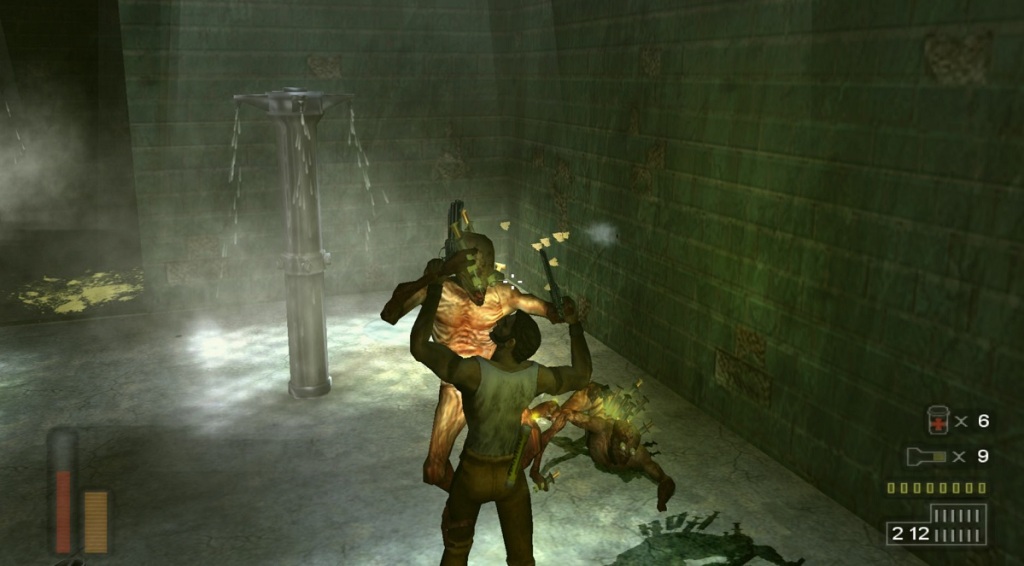
Image Credit: Surreal Software
GamesBeat: What games have they done that were interesting to you?
Rouse III: One that was most interesting was called Jar Wars, which evolved out of a VR jam project. It’s a Futurama meets PvP dueling sort of thing. That felt like it had a real sense of character to it. It felt like it was a unique world. It was inspired by other things, but it was its own thing. That was cool. It doesn’t really represent the type of stuff we’re looking to work on, so I don’t want to oversell that. But I thought, “This is a company that knows how to make this thing. I can come in and bring some larger narrative and larger game aspirations.”
GamesBeat: They’ve done a lot of work for hire as well, right?
Rouse III: Yeah, the studio mixes right now between the projects we’re working on internally, which we haven’t announced yet, and the Battlefield game we’re working on, or the Walkabout Mini Golf game made by a team called Mighty Coconut that’s a very successful VR golfing game on the Quest. FarBridge got involved in expanding the features in that game for new platforms. It’s the classic dance you do. You have a studio that’s trying to grow. Getting to work with these teams–obviously there’s a financial incentive to that, but also just seeing how they work, the processes they’re using, getting your team some experience on these bigger projects and then bringing that to your own things you’re doing internally or the next project you’re going to take on.
GamesBeat: How do you approach getting started on a new creative project, figuring out what kind of game you want to work on? Is there a pattern that creative directors follow when they’re trying to get work started? When you were approaching this, was there a certain kind of thinking process that you initiated?
Rouse III: I think every creative person has things they like and don’t like. That’s the most basic level. But there’s also usually, for me anyway, a lot of things I could get excited about. I’m not just interested in one genre or one idea. Then it’s a combination of the ideas that are interesting right now, and I don’t necessarily come up with all of them myself, what are the ones that fit the situation, fit the studio, what the studio’s interested in, what the studio can do, the various personalities on the team? What is everyone going to be most jazzed about working on? How can we find that overlap where everybody gets their piece into it?
For us, some of the stuff we’re working on internally is more in the horror space. That was something I’ve long liked. I have a bias for real-world settings that have some dark twist on them of some kind. That fit with a bunch of the stuff they were into. We had a bunch of ideas that we talked about, some of which I came up with and some of which I didn’t. Then we worked those all around.
Usually for me, too, it’s coming up with something you can describe–that you can almost start with the one-sentence pitch. Can you explain it in a sentence? And then someone will say, “That’s interesting, tell me more.” As opposed to a one-sentence pitch where they say, “Oh, I’ve played this already.” You want the one sentence that’s like, “This, plus…” I look at all ideas that way first, even though the actual game or world you’re going to be creating is going to be much more complex than that. You can have a lot of great details in it that would make any pitch–you could make the most boring one-sentence pitch in the world into a good game if you execute on it. But it helps if you have the one sentence that can get someone to want to know more.
GamesBeat: You guys have this phrase, “Worlds you can get lost in.”
Rouse III: Yeah, yeah. When we were just talking about what sums up where we’re taking the studio, the different projects we’ve recently shared or are working on now–we like games where it feels like a place you like being in. Whether it’s a short game or a longer game. Somewhere that, when you go there, feels like you’re going back to a place you like. When I say “like” that doesn’t necessarily mean it’s a nice place. It can be a dark and disturbing place. But it’s a place that feels unique and has a real sense of place to it. Even if you’ve maybe already finished the main story, you just want to go back to that world because you like being there. You get lost in it. People care about the unique thing you’ve made. Whether that’s an IP we’re working with or an original thing, someplace that people get passionate about.
Certainly a lot of games fit that bill, but then there are a lot of games like, “Yeah, this is a pretty good diversion, but I don’t really feel like I’m in a place when I do this. This is just a pile of mechanics that are cool, but it doesn’t have that sense of being in a place.” That was important to everyone as we talked about how to come up with that catchphrase, if you will.
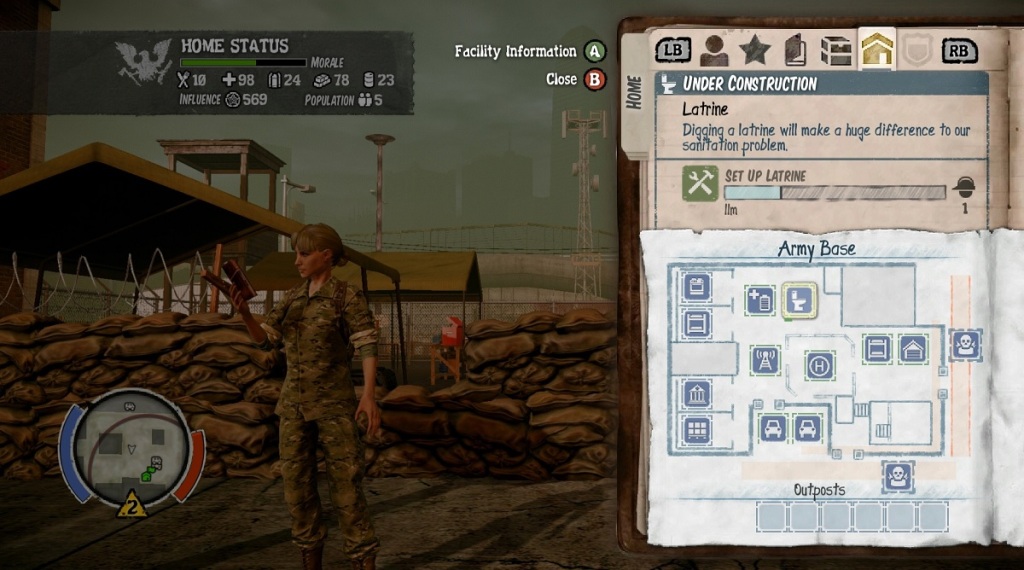
Image Credit: Undead Labs
GamesBeat: I guess they figured out that they needed or wanted to switch out of VR games?
Rouse III: We’re still working on the Walkabout VR project as well. The studio had done a bunch of projects that were VR, but not games. I think the realization was that everybody cared most about the games and wanted to focus on games. We’ll probably still work on some VR things, but a lot of the stuff we’re working on right now too is not just VR.
GamesBeat: How do you also create in the context of a larger team, where it isn’t just your ideas? As opposed to things that were much more deeply interesting to you, like the Church in the Darkness, with all that research you did on cults. That seems like a game that you had to make because it was something you’d thought about for years, worked on for years. But you come into a situation like this and there’s a larger team with other ideas that come from other people.
Rouse III: If you’re working as part of a much larger team as any creative — and that can be you as an individual contributor, or that could be FarBridge as a team working on one of these bigger projects that we help out with — finding that thing that you care about in the space is super important, and then making sure that part comes through.
Obviously, working with these bigger projects, they have their goals which they’re passionate about, what they think are important to the project. If you can’t align with those, maybe you shouldn’t be working on that project. But hopefully you take those in and you’re doing that, but then you usually find your own things that make your part of the game not only live up to that, but also live up to something that’s unique to this part of the game. We own it in some way. And then it’s always finding a balance of–obviously the folks at the top are going to be checking on the stuff they care about, and then internally you’re also making sure you’re hitting your own marks too. It can vary quite a bit based on what the project is.
That’s true of any license you might work with, too. The larger part of the license is this, but my favorite part of it is this other thing that’s related to that. I’m going to make sure that comes through in what we’re working on. It’s always balancing that. This is kind of a hand-wavey answer, but it’s true.
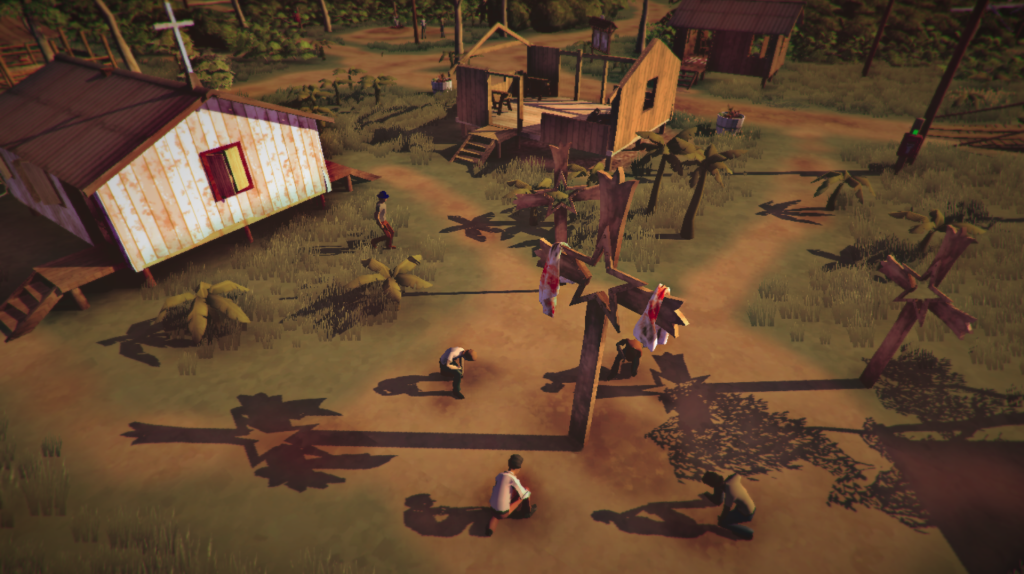
Image Credit: Paranoid Productions
GamesBeat: I remember seeing an interesting Twitter thread by Osama Dorias about what unique thing you put into a game that was highly personal. He had other people weighing in. There was an artist who put a memorial in a church to one of his best friends who passed away. It was just something he put on a wall as part of the scenery. Some other people in the studio did the same, filling out the walls of this scene this way. An interesting way to make a game personalized, something that has your stamp on it, but is part of something larger.
Rouse III: Yeah, I remember that thread as well. That was great. Games are sort of uniquely suited to that because they are often worlds. If he was a set decorator on a movie, in the same situation he might have put a memorial to his friend on a corner, but maybe it would get cut from the movie, or it would only be there for two seconds as the camera panned past it. Whereas in a game, when you’re creating these 3D worlds that often have multiple layers of story working in them–you have the large macro story, then you have the environmental narrative of the place you’re in, and then you have little relics you find that tell their own stories. It really does give an opportunity to put in bits of story at a lot of different levels, even if it isn’t written story or part of the core story.
Having that ability to say, “There’s a lot of stuff going on here, and some players may see it, some won’t, but I know that when I go play the game I can find it, and some other people will find it and wonder what this little thing is about.” They can look at it as much as they want, because as a player they have control of how much they take in from the game.
In a good team, where you do have that mutual respect–if, say, a creative director was walking by in that space of the game and said, “What’s this? This doesn’t fit. We should cut it.” Hopefully the person who made it would, in a good environment, be able to speak up and explain that it’s personal to them and find a way to keep it that works with the overall vision. A good creative director in that position would say, “Okay, cool. I see this. What if we tweak it like this? You can still have this thing and it fits with the larger creative we need to have.”
That’s part of the value of working in a smaller studio, too. Those conversations are easier when everyone knows each other, versus when you have a 300-person team or something. That artist who made the little asset in the corner might not be on the project any more by the time someone cuts it, and that would be sad.
GamesBeat: For this particular project, whatever is the first project you’re walking into here, what are some things that you’ve done around how you approach your creative director role? Is there a particular approach you took in starting this project?
Rouse III: For the project that we’re working on, actually it started with a pitch that someone else wrote up originally. They then had to go work on something else, and I worked more on the narrative underpinnings of it. That can sometimes be good, where it’s not your idea from the very beginning. You can be a bit more objective about it. I worked on it a bunch and then brought it back to the person who wrote the original pitch, as well as other creative stakeholders of the company. Everyone said, “Yeah, we like this part. We understand what this part is doing. Can we make this better, and that?” It was collaborative from the get-go, trying to come up with something everybody likes.
To this day, as we’re working on the demo for that project, the beginnings of that project, if anyone brings up, “I don’t get what this is about. Can we make this stronger?” Or, “What if we did this with this instead?” Those lead to a lot of interesting discussions, instead of just, “No, we’re not doing that.” I’m trying to approach it that way.
Also, seeing it as–to me, as a creative director, the most important thing–yes, I have those things that are personal to me that I’m trying to defend, but the most important thing is that it’s good, and that it satisfies our goals for the project at large, which is that it be scary, make you think about the world in a different way, the darker side of the world in a different way. It’s an experience that the player isn’t going to get somewhere else. That’s important to us. And again, going back to that world you can get lost in. It has enough richness and texture to it that it’s a real place, not just a pile of mechanics put into certain geometry.
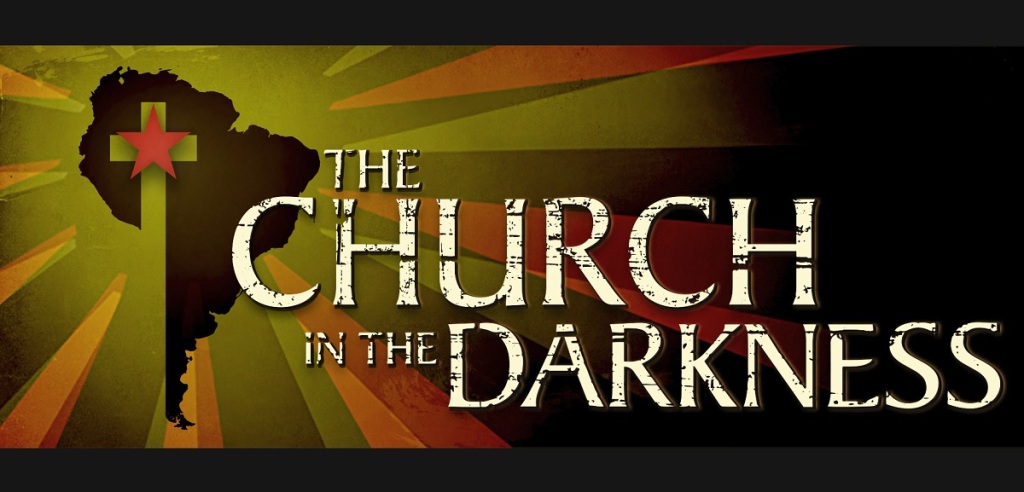
Image Credit: Paranoid Productions
GamesBeat: As far as how much change happens by a certain point, how do you approach that? I remember talking to Pixar about how they made the Monsters University game. Their process is so different because they have to lock in everything — the story, the characters — and then they can’t make changes. Otherwise they screw up the whole rendering schedule. Then they made a big change in that movie, changing the villain character from a man to a woman. When they did that they had to go back and restart a bunch of work. In games, you don’t have as big a problem in that respect, but you do have problems like features creeping up and wrecking the schedule.
Rouse III: We do have that problem, particularly on a smaller team where you have to be very efficient. You can’t just throw bodies at the problem. For me it’s like–let’s do as much of that as early as we can. I’m someone who definitely likes to leave doors open to iterate, particularly in terms of gameplay mechanics. Until you put it in front of a player who isn’t your best friend, a real player who’s going to just put it down if they’re not engaged, you don’t really know if it’s working. Even more than in movies. Although movies do test screenings as well. But for games there’s a need for a lot more iteration, particularly if you’re doing something that isn’t exactly like another game. The mechanics are going to be different, how players are going to feel about doing different things or wanting to do the things you think they’re going to want to do. Did they actually agree with their goals? You need to be a lot more open to that.
At the same time, I try to be careful about changing things just for the sake of changing them, which can happen. Particularly if you’ve worked on a game for a year and a half or something and everyone on the team has played the levels hundreds of times. There’s an instinct to say–unconsciously, even, there’s a desire to make it new because you’re so tired of playing the old version. Whereas a player who hasn’t played it before is going to think it’s great, because they’ve never seen it before.
You do have to be careful of, “Hey, we picked this direction. We could change it this way, but that’s only five percent better. Maybe five percent better isn’t worth the hit to the schedule.” Whereas sometimes you’ll find, “Oh, this is going to be twice as good if we make this change. We need to find a way to do this.” That cycles back to the playtesting, too. Hopefully by that point you have players involved and you can see what they react to. You can be honest in how you pick what you’re going to iterate on, because you can’t iterate on everything forever.
GamesBeat: As far as the combination of things like narrative and other elements, what ambitions are good to go after in this–I don’t know if you’d call it the double-A space or whatever. You’re not quite doing a giant Naughty Dog type of production with epic stories to go along with huge amounts of gameplay. What’s your target there?
Rouse III: Obviously the Naughty Dog stuff is great, best in class in many ways. And also, yes, quite long to match with what people expect when they pick up a project that big. For us, we think of it as, how do we get–some of the stuff we’re doing with the game will be a little different, more surprising and unique in how the mechanics work and how they interact with the story, so it’s more off the beaten path than a lot of the quad-A games are able to do. There’s a bit of that.
But then there’s also, how can we make a high-quality narrative experience for someone who only has so long to play? Someone who maybe has a job, has kids, and they want to play a game and feel like they have a satisfying experience too. How do you make something that isn’t so long they can never finish it? They can have a satisfying experience playing for eight hours or so. But then how can someone who has more time, someone who’s maybe in college and avoiding their schoolwork and has all the time in the world–how can they spend 20 hours in the game and still enjoy it?
We’re thinking about it as–we try to make that high-quality experience that everyone can enjoy that’s somewhat shorter, and then you also have other layers to the world. I was talking about environmental narrative before, about little bits of narrative that are maybe only text or voice or other cool things, something tucked away in the corner where you want to try to find out what that’s all about. How can you have more of those things so that people who have more time after they finish that core story experience–they can go explore the rest of the world and get even more out of it, post their theories on a wiki or something like that.
Some games, when you play them, you go and finish whatever the main story is and then there’s really nothing there anymore. That’s it. I’ve always enjoyed the kind of game where I can still go back to it. State of Decay is a good example, which I worked on while I was at Microsoft. Even at launch they had a bunch of core story stuff, but then they had a lot of content around it. Some of it was procedural and some of it was fixed, but it felt like I could keep playing and get more out of it, continue to get lost in the world.
And then of course there’s the live service. We can keep adding more content post-launch. Maybe the core story’s the same, but now there’s a coda to it. Now there’s these extra bits of lore sprinkled around the world for people to go find. We’re looking at how to get something that works on multiple levels, so that you can keep coming back to it for a long time.
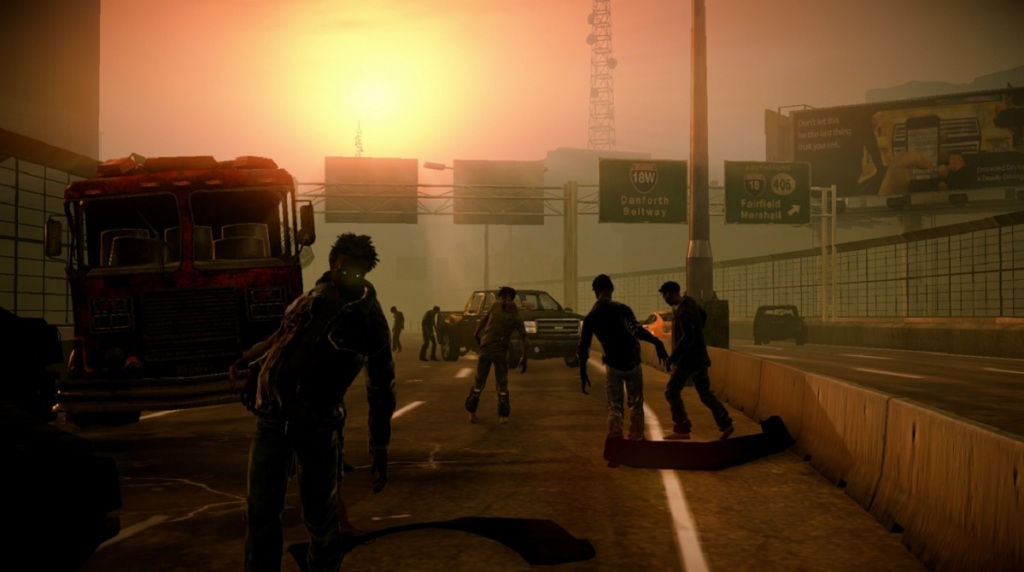
Image Credit: Paranoid Productions
GamesBeat: Do you have any other advice for the role of creative director, people who want to be creative directors in the future?
Rouse III: I mentioned that not every idea has to come from you. That’s important. The best creative directors are often very good editors, in a way. They’re getting ideas from a bunch of places and they can see which ones are good and which ones need more work and which ones might not fit. They can give the feedback in the most creative, positive, constructive way to people, so that they can say, “Oh, I see how this doesn’t work, but if I fix these things it will.” That’s a lot of it.
The other part is to–there’s a flip side to that of being too indecisive, or too open to everything. Then you can just end up with mush that doesn’t fit together. You have to be able to quickly give people feedback. “Yeah, that fits,” or, “That doesn’t quite fit, but what if you did this?” When people come to you for these answers, you need to be able to give them answers quickly. You can’t just think about that for a few weeks. You don’t have that kind of time.
GamesBeat: You have to start with an idea and explain how it would play out.
Rouse III: Much as we’re creating games for players to express themselves in, figure out how to solve things, figure out what part of the story they’re going to understand, as a creative director you’re kind of creating a setup for your team to be creative in as well. You’re setting up–here’s the rules of this game we’re playing, which is game development. Obviously it’s more like a live D&D session, where you’re there and can interact, whereas when the players play you’re not right there with them. But getting folks to be able to do what they do well within a framework. You get some of your ideas in there too, because everybody wants to do a bit of that. But mostly you’re recognizing that what’s most important is that it hits our goals, that it be good, rather than being exactly any one thing.
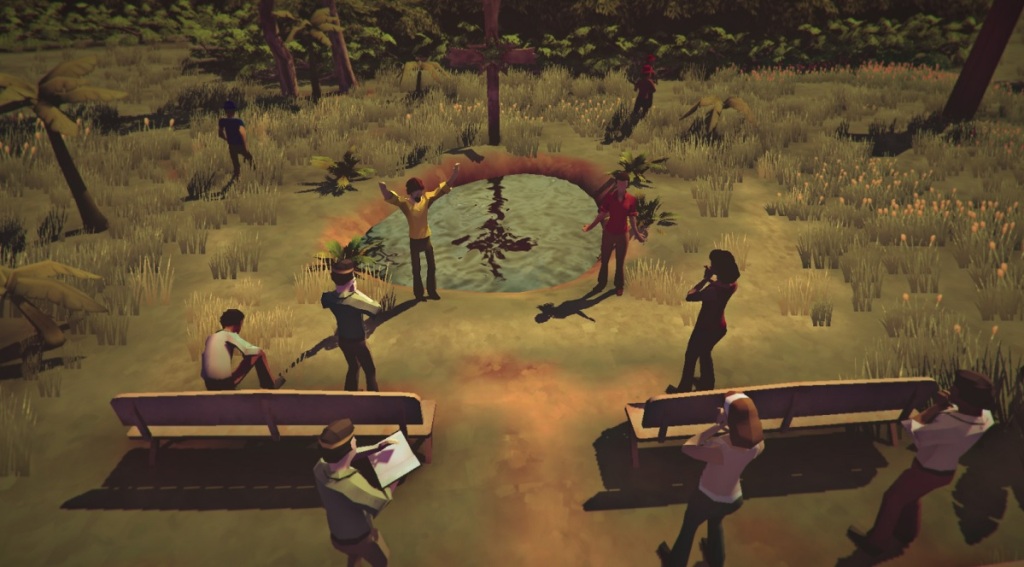
Image Credit: Paranoid Productions
GamesBeat: What was your own view of how The Church in the Darkness came out?
Rouse III: It was that extremely personal–I made so many of the choices in that game. I’m certainly glad I did it. You look back on it and you think, “Yeah, I would have done that differently knowing what I know now.” But I feel pretty good about how it turned out and the level of success it found for how weird it was. It was very indie, experimental narrative stuff. It has a lot of procedural narrative. Probably not enough straight narrative. That’s something we’re trying to balance, too. Leaving room for player creativity, but also weaving together a compelling, strong story that anyone can latch on to without having to make it up themselves along the way.
Church in the Darkness was definitely saying, “What if we got rid of all of that?” Sometimes that works out great. That game could have had a little more traditional strong game narrative to it. It’s probably something I could have thought about doing. But I’m glad to have made it. It’s one of those things where you have to do it to find out it’s going to work. That’s been true on lots of projects.
GamesBeat: Any other thoughts you wanted to bring up today?
Rouse III: I’m just excited to solve these problems with this team. I felt good about the interactions there, and I think everybody else does too. We do a lot of internal surveys of the team periodically to help keep people–just letting people bring up issues, either anonymously or not. “Oh, this interaction didn’t go great, but we could make that better.” It’s super important for us to make sure everyone feels welcome and valued and respected.

